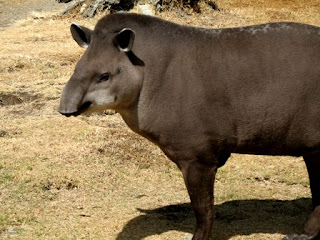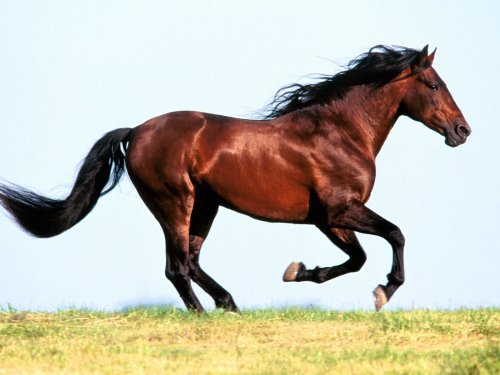 |
| A Tzimin |
In his Letter to a CES Director, Jeremy Runnells marvels that, according to “unofficial apologists” (what is with the need to implicitly discredit anything not “official” anyway?), “horses aren’t really horses (they’re tapirs)” in the Book of Mormon. Kevin Christensen has already pointed out that this assertion actually flattens the nuance found in the essay Runnells uses to make this claim, including the tentative evidence for horses in America. In the past, I have reviewed the work of Dr. Wade Miller, a geologist and paleontologist who has tested several pre-Columbian horse specimens which appear place horses in the New World around Book of Mormon times. This evidence is inconclusive, but demonstrates the kind of openness that remains part of the horses/Book of Mormon discussion which gets glossed over by Runnells and many others. No apologist is half as rigid as any ex-Mormon about horses being tapirs. The ex-Mormons talk about it incessantly. It is all just a big joke to them.
Interestingly, however, according to David Bolles, on the Foundation for the Advancement of Mesoamerican Studies, Inc. (FAMSI) website, the first definition of the Maya term tziminis tapir. Yet, “After the conquest [tziminwas] also applied to the horse.” And why did the Maya call horses tapirs, exactly? “The Mayas call the horse tziminfrom its fancied resemblance to the tapir.” If you are the kind of person who scoffs at the “apologists” association of horses and tapirs, read that sentence again.
 |
| Also a Tzimin |
This is what linguists and anthropologists call a loan-shift, and it is ridiculously common whenever different cultures come in contact with each other. If you are American, like me, odds are you are oblivious to the fact that you use loan-shifts like robin, elk, buffalo, and corn on a regular. In this case, the word for tapir was barrowed by the Mayans to describe horses, which they had no word for. As Pedro Olavarria (from whom, I must confess, I got the FAMSI reference) points out, “Is it really that strange to ask if the reverse was done by the Nephites?” When Lehi and his party arrived, they didn’t have a word for tapir (or any other of the many exotic species in Mesoamerica). Could they have “fancied [a] resemblance” between it and the horse, like the Mayans did centuries later?
Of course, one need not assume the Nephites held onto labels that Nephi chose at the beginning. We know that their language changed, as per Mormon 9:32–34. What if, in fact, the “horse” in the Book of Mormon is not the reverse of the loan-shift, from tapir to horse, but was the loan-shift from tapir to horse? That is, what if, hypothetically speaking, the plates said tapir. Or, more precisely, they said tzimin, the Nephites having adopted the local term into their vernacular. Then, Joseph Smith translated it as horse. Would this be an “inaccurate” translation? Before assuming yes, remember that in 1829—when the translation was made—horse would have been an acceptable translation of tzimin (as it is today).
I do not presume to know if Book of Mormon horses are tapirs. Given that known cultures have used the same label for both horses and tapirs, however, I find the suggestion entirely reasonable. One could, if they wished, ask, as some critics amusingly ask about horses or cows, “When is a tzimin not a tzimin?” Why, when it’s a horse, of course.
Continue reading at the original source ‚Üí



